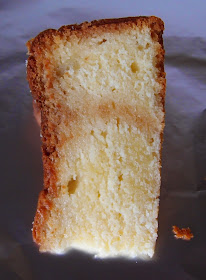It’s Wimbledon
time so my thoughts have turned towards strawberries - I am a predictable
creature! This cake was the cover star of Good Food magazine a
month or so back and I stored it away for when the strawberry season was at its
best.
You will often hear people complaining that strawberries don’t taste like they used to…and that is true for many strawberries but I think that, if you’re choosy about the variety of strawberry you buy, there are some crackers still available. If you cannot grow your own, and don’t have a pick-your-own nearby, here are my tips for buying strawberries:
- Avoid
any imported strawberries – I don’t want to eat a strawberry that’s seen
more of the world than I have!
- Buy
strawberries grown as locally to where you live as possible – it surely
means they’ve not been sitting around for long?
- Take
note of the variety of strawberry you like – I would rather go without
than buy the tasteless Sonata variety, but a Jubilee strawberry is pretty
much a guarantee of flavour.
- Smell
them. A strawberry with no smell is a strawberry with no taste.
This recipe pretty much ticks all my boxes for what I like in a cake: it’s made with yoghurt, it contains almonds, it uses cheesecake, and it has big chunks of fruit. It would work with many different fruits. The CCD’s damson tree is looking like it’s going to have a bumper harvest so I might make the cake again using damson plums.
The soft almond sponge provides a lovely texture for holding the pockets of cheesecake and strawberries. This really was one of the best cakes I’ve tasted in a long time...and I’ve tasted a lot of cakes!
Ingredients
For the cheesecake:
200g cream
cheese – I used Philadelphia
25g caster sugar
1 egg
25g caster sugar
1 egg
For the cake:
175g unsalted
butter, at room temperature
250g caster sugar
2 teaspoons vanilla extract
4 eggs
200g self raising flour
50g ground almonds
75g natural yoghurt
250g strawberries – washed, hulled and chopped
Handful of flaked almonds
250g caster sugar
2 teaspoons vanilla extract
4 eggs
200g self raising flour
50g ground almonds
75g natural yoghurt
250g strawberries – washed, hulled and chopped
Handful of flaked almonds
Method
Start by making
the cheesecake: beat together the cream cheese, caster sugar and egg until
combined. Don’t overbeat or it will turn runny – I would actually
recommend doing this stage with a bowl and a spoon to control the texture of the
mix better. (Mine did turn runny so I
popped it into the freezer for an hour before making the cake – this turned it
back to a more spoonable consistency).
If – unlike me –
you haven’t turned the cheesecake mix runny, spoon into a bowl and refrigerate
until needed.
Preheat the oven
to 180°C/fan oven 160°C/ 350°F/ Gas mark 4.
Line a 20cm
round springform tin with baking paper.
Beat together
the butter and sugar until pale and whippy. Don’t skimp on this stage –
it should look almost like whipped cream.
Beat in the
vanilla.
Beat in the eggs
one at a time, adding some of the flour if it looks like the mixture will
curdle.
Stir in the
flour, almonds and yoghurt.
Spoon half of
the cake batter into the prepared tin and level the surface.
Spoon blobs of
the chilled cheesecake mixture onto the cake. Use about half at this
stage.
Scatter over half the strawberries.
Spoon the
remaining cake batter over the top and level the surface. Be gentle so
the strawberries stay in place.
Use your finger or the end of a wooden spoon handle to make divots in the sponge. Blob the remaining cheesecake into these spaces.
Scatter over the remaining strawberries.
Scatter over the
flaked almonds.
Bake for approximately 50 minutes or until a skewer inserted into the cake comes out clean. It is best to check after 45 minutes to see if the cake is browning too quickly; if it is cover loosely with foil and continue baking. Don’t worry if your cake takes longer – mine took almost 1 hour 30 minutes, and I did need to cover it with foil.
Leave to cool in
the tin for at least 20 minutes before de-tinning and leaving to cool
completely on a wire rack.
Refrigerate the
cake until 20-30 minutes before serving.
Bask in the
glory of the wonderful thing you have created.
Eat.


























